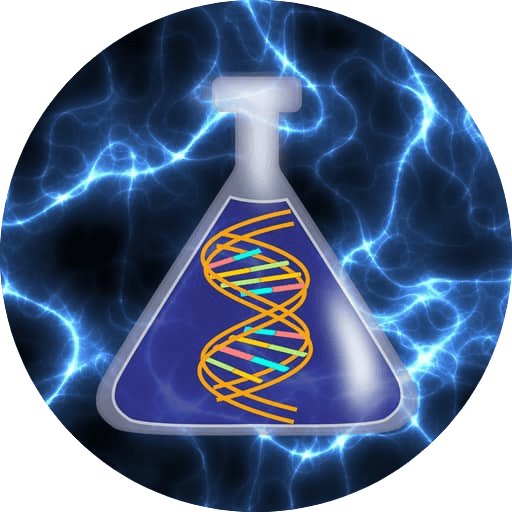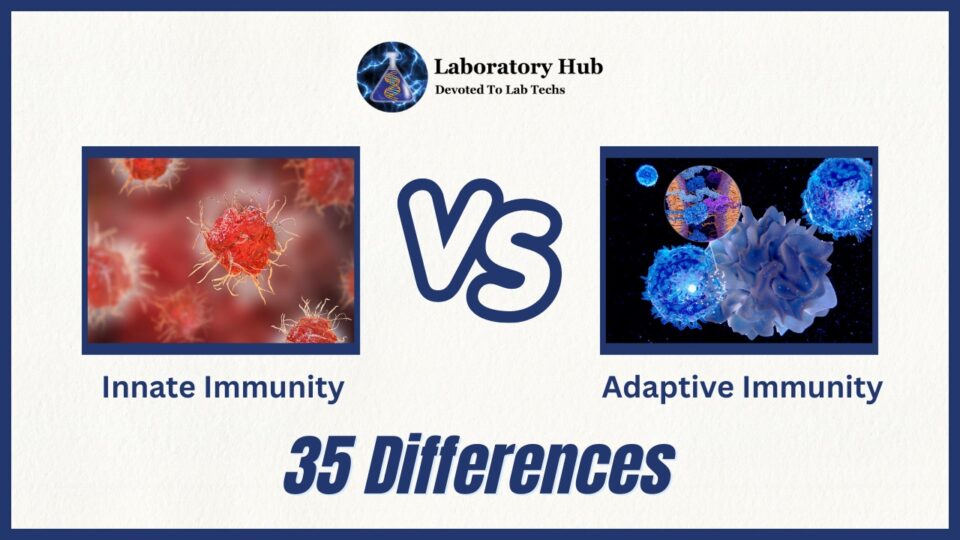The human body’s complex mechanisms continuously defend us from infections. Immune systems—innate and adaptive—are extraordinary defensive mechanisms. Though interrelated, these two defenses have distinct traits and protect our health.
The body’s earliest defense against infections is innate immunity. It responds to any antigen from birth. Innate immune responses involve cellular, chemical, and physical barriers including skin and mucous membranes. Neutrophils, macrophages, and natural killer cells quickly recognize and eliminate foreign intruders. Antimicrobial proteins and cytokines neutralize the danger. Innate immunity responds within hours of infection and bridges to adaptive immunity.
Adaptive immunity develops over time and is extremely specialized and accurate. It recognizes particular antigens, unique chemicals on infections or aberrant cells. Adaptive immunity remembers pathogens and responds faster and stronger to them. Lymphocytes—B and T cells—drive adaptive immunity. B cells make antibodies that neutralize or destroy the antigen, whereas T cells coordinate immune responses and directly assault infected cells. B cells, T cells, and dendritic cells work together to fight certain infections.
Innate and adaptive immunity are interrelated and synergistic, despite their different mechanisms and timing. Innate immunity delays infections until adaptive immunity can respond. Innate immune cells stimulate and form the adaptive immune response, connecting the two systems.
Understanding innate and adaptive immunity is essential to understanding the immune system. These two defensive systems work together to efficiently and effectively counter a variety of threats. This understanding also helps scientists design vaccines and medicines to harness the immune system’s disease-fighting power.
In this post, we’ll explore innate and adaptive immunity’s methods, traits, and interactions to defend our bodies from infections. We may understand the intricacy of our defensive mechanisms and their amazing capacity to adapt and keep us healthy by studying these immune systems.
|
S. No. |
Aspect |
Innate Immunity |
Adaptive Immunity |
|
1 |
Definition |
Nonspecific, rapid defense mechanisms |
Specific, slower defense mechanisms |
|
2 |
Specificity |
Broad and generic response |
Highly specific response |
|
3 |
Components |
Physical barriers, phagocytes, antimicrobial proteins, natural killer cells |
Lymphocytes (B cells, T cells), antibodies |
|
4 |
Memory |
No memory |
Develops memory for future encounters |
|
5 |
Response Time |
Immediate, within minutes |
Delayed, takes days to develop |
|
6 |
Antigen Recognition |
Recognizes specific antigens |
|
|
7 |
Activation |
Activation is not antigen-dependent |
Activation requires antigen recognition |
|
8 |
Diversity |
Limited diversity |
High diversity of antigen receptors |
|
9 |
Inheritance |
Not heritable between generations |
Can be inherited genetically |
|
10 |
Response to Pathogens |
Responds to broad classes of pathogens (bacteria, viruses) |
Develops specific responses to individual pathogens |
|
11 |
Immunological Memory |
Lacks immunological memory |
Develops immunological memory for long-term protection |
|
12 |
Tolerance |
No tolerance development |
Develops self-tolerance to avoid attacking own cells |
|
13 |
Speed of Response |
Rapid response, often within hours |
Slower response, typically takes days |
|
14 |
Mechanisms |
Phagocytosis, inflammation, complement activation |
Antibody production, cellular immune responses |
|
15 |
Anatomical Barriers |
Physical barriers (skin, mucous membranes) |
No specific anatomical barriers |
|
16 |
Role in Autoimmunity |
Not directly involved in autoimmunity |
Can contribute to autoimmunity |
|
17 |
Specific Defense |
Lacks specific defense mechanisms |
Possesses specific defense mechanisms |
|
18 |
Cytokine Production |
Produces a limited range of cytokines |
Produces a wide range of cytokines |
|
19 |
Anatomical Barriers |
Physical barriers (skin, mucous membranes) |
No specific anatomical barriers |
|
20 |
Pathogen Recognition |
Uses pattern recognition receptors (PRRs) |
Utilizes diverse antigen receptors (BCRs, TCRs) |
|
21 |
Role in Allergy |
Can contribute to allergic reactions |
Involved in the development of allergic responses |
|
22 |
Immunization |
No specific immunization process |
Immunization can induce specific immune responses |
|
23 |
Complement System |
Part of the complement system |
Not directly involved in the complement system |
|
24 |
Role in Cancer |
Limited role in cancer surveillance |
Plays a role in immunosurveillance against cancer |
|
25 |
Examples |
Phagocytic cells, natural killer cells, complement proteins |
B cells, T cells, antibodies |
|
26 |
Immunodeficiency |
Can lead to immunodeficiency disorders |
Immunodeficiency disorders can impair adaptive immunity |
|
27 |
Receptor Types |
Utilizes pattern recognition receptors (PRRs) |
Utilizes diverse antigen receptors (BCRs, TCRs) |
|
28 |
Activation Time |
Activation occurs rapidly |
Activation requires antigen presentation |
|
29 |
Response to Self |
Does not differentiate self from non-self |
Possesses mechanisms to recognize and tolerate self |
|
30 |
Cellular Components |
Phagocytes, natural killer cells, dendritic cells |
B cells, T cells, antigen-presenting cells |
|
31 |
Role in Vaccination |
No direct role in vaccination |
Vaccination utilizes adaptive immune responses |
|
32 |
Genetic Recombination |
Does not involve genetic recombination |
Involves genetic recombination in B and T cell receptor genes |
|
33 |
Examples of Diseases |
Sepsis, innate immunodeficiency disorders |
Autoimmune diseases, immunodeficiency disorders |
|
34 |
Role in Transplantation |
Involved in immediate response to transplantation |
Major role in graft rejection and tolerance induction |
|
35 |
Antigen Presentation |
No requirement for antigen presentation |
Requires antigen presentation for activation |
Also read: Active Immunity vs Passive Immunity – 26 Key Differences
Frequently Asked Questions (FAQS)
Q1: What is innate immunity?
Innate immunity is the body’s initial, nonspecific defense against infections. The skin, mucous membranes, and cellular and chemical components quickly recognize and remove external intruders.
Q2: What’s adaptive immunity?
Adaptive immunity develops overtime. It targets certain antigens. B cells produce antibodies and T cells coordinate adaptive immunity.
Q3: Differences between innate and adaptive immunity?
Innate immunity protects from birth without prior antigen exposure. Adaptive immunity develops over time, is specific to antigens, and has memory, allowing for a faster and stronger response to pathogens.
Q4: What are some natural immune defenses?
Skin, mucous membranes, phagocytic cells (neutrophils, macrophages), natural killer cells, antimicrobial proteins, and inflammatory reactions are innate immune defenses.
Q5: What causes adaptive immune responses?
B and T cells recognize antigens to trigger adaptive immune responses. B cells make antibodies that neutralize or destroy antigens, while T cells coordinate immune responses and directly assault infected cells.
Q6: Can innate immunity provide long-term protection?
Innate immunity doesn’t offer long-term pathogen protection. However, it starts and shapes the adaptive immune response, which develops memory and provides long-term protection.
Q7: How does the immune system recall pathogens?
Memory cells—subsets of B and T cells—remember pathogens. Memory cells recall prior infections for faster and more effective responses.
Q8: Can an overreacting immune system create diseases?
Yes, an overactive immune system can cause autoimmune illnesses by attacking healthy cells and tissues. RA, lupus, and MS are examples.
Q9: Do vaccinations boost innate or adaptive immunity?
Most vaccines boost adaptive immunity. They stimulate antibody and memory cell development without causing illness by including weakened or inactivated pathogens or their antigens.
Q10: Can innate and adaptive immunity cooperate?
Innate and adaptive immunity cooperate to protect against infections. Innate immunity protects and activates adaptive immunity.
User Review
( votes)
Laboratory Hub aims to provide the Medical Laboratory Protocols & General Medical Information in the most easy to understand language so that the Laboratory Technologist can learn and perform various laboratory tests with ease. If you want any protocol to be published on Laboratory Hub, Please drop a mail at contact@laboratoryhub.com. Happy Learning!

